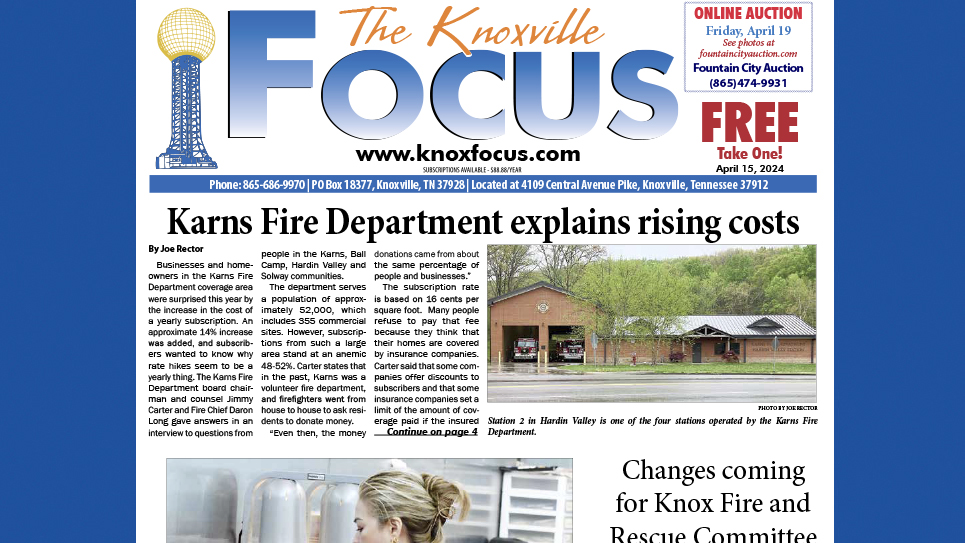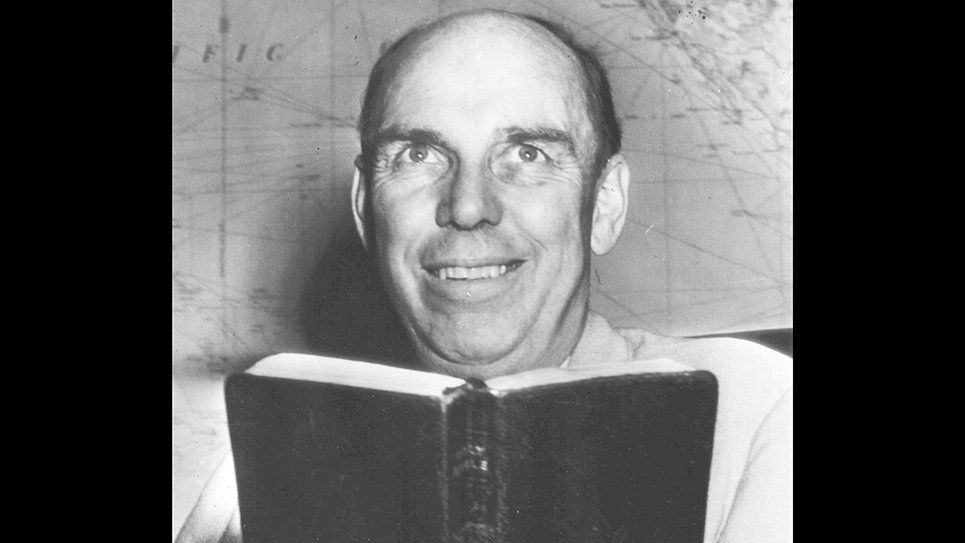
From the author’s personal collection.
Two of the most important Tennessee New Deal figures during the Great Depression (from left to right) Senator Kenneth D. McKellar and Secretary of State Cordell Hull along with Senator Majority Leader Alben Barkley of Kentucky. Photo taken at the 1936 Democratic National Convention.
Tennessee, like the rest of the country, was suffering terribly from the effects of the Great Depression. Despite the general impression the 1920s had been a decade of plenty and prosperity, that was not entirely true in the South.
Tennessee was especially hard hit. Following the crash of the stock market, Caldwell and Company collapsed. Caldwell and Company was the largest bank in Tennessee and its collapse caused a chain reaction of other banking institutions to close their doors, as folks scurried to remove their deposits. The State of Tennessee lost almost $7 million with the collapse of Caldwell and Company, which caused the legislature to try and impeach Governor Henry Horton. Horton was politically allied with former United States senator Luke Lea, who was heavily involved in the banking enterprise with his friend Rogers Caldwell. Lea was the power behind the throne during Horton’s administration and there were more than a few who believed the former senator was governor in all but name.
Horton survived the attempt to impeach him, albeit only barely, but he was a broken man and his power evaporated. He spent the last two years in office largely ignored and more than a little reviled. Luke Lea was less fortunate than his ally, losing his newspaper empire. Worse still, Luke Lea would eventually go to prison.
As in many places throughout the country, cash was scarce. Charities were overwhelmed while trying their best to feed the hungry. Beggars stalked the streets of Nashville as soup kitchens operated on Gay Street in Knoxville. Workers lost their jobs, as businesses were forced to lay off personnel or let them go entirely. Memphis did not suffer to the same extent as Nashville, Knoxville and Chattanooga, but fully a third of industrial jobs in Shelby County disappeared.
For black Tennesseans, things became excessively bleak. Many jobs considered the province of African-Americans were claimed by jobless whites, who became cooks, bakers, maids, and scrubwomen. For many black Tennesseans, there were no jobs at all. In Knoxville alone, all the bakers had been black prior to the Great Depression; by 1934, every baker was white. That same year, there were only two non-white chefs in Knoxville.
Soon the charitable organizations were not only inundated, but also overwhelmed. The charities did not receive enough contributions to purchase food for the hungry. As winter approached in 1932, there were reports that thousands of people were not only malnourished, but also actually starving.
For three long years, much of the South had been plagued by a severe draught. An already dreadful problem became even more acute. Large landowners suffered, as did tenant farmers. The prices of cotton and tobacco, two of Tennessee’s biggest cash crops, plummeted. Small farmers who owned their own land managed to survive by eating what they grew, parsing out expenditures and doing without. Many children of farmers had gone to the cities to make their homes, but returned to the farm when their livings disappeared with the Depression.
Knoxville’s growth virtually stopped, as many folks left to return to the farm or left town to try and find jobs. With numerous factories closed, many laborers earned 30 cents an hour in those few factories still operating. Skilled carpenters who did not belong to the union earned 65 cents an hour. Truck drivers made 40 cents per hour and textile workers 35 cents an hour. When the contractor for the Henley Street Bridge bragged he intended to pay workers “New York” wages, local businessmen immediately quietly discouraged him, fearful it would cause their own employees to desert them for a better paying job.
Public employees were little better off, as Knoxville had incurred a fearful bonded indebtedness, causing the City of Knoxville to pay its workers in scrip. Residents were defaulting on their taxes, which caused the City Council to have to issue even more bonds, as well as fend off its own creditors.
Much of the middle class in Knoxville ceased to exist. Unemployment levels across the nation reached quite nearly 25%.
Knoxville was also especially wounded by bank failures during the Depression. The largest real estate firm in Knoxville went into receivership. The Holston-Union Bank, Knoxville’s major bank, failed after Caldwell and Company collapsed. Rogers Caldwell had made significant investments in the Holston-Union Bank and despite desperate efforts to save the bank, including a significant loan from the Federal Reserve, depositors were panicked and withdrew $750,000 in a single day. The bank closed its doors on Armistice Day.
It was the failure of the Holston-Union Bank that helped to send Luke Lea to prison.
The fear and panic caused by the failure of the Holston-Union spread like an airborne contagion. Bankers tried valiantly to reassure the public and combined several institutions to form the East Tennessee National Bank. The new East Tennessee National Bank got loans from both the Federal Reserve and the Reconstruction Finance Corporation, but it, too, failed in January of 1932. The six national banks located in Knoxville were all gone by 1932, either through consolidation or failure. A few lucky investors had gotten their money out in time, but many more lost everything.
Building permits in Knoxville fell from 2,207 in 1928 to 757 in 1930. Folks abandoned membership in service organizations, disconnected their telephone service, and went hungry. In 1930, 2,284 people were recorded as being unemployed; by 1937, the figure was 7,534. The entire population of Knox County in 1930 was slightly less than 156,000 people.
Even with the advent of Franklin D. Roosevelt’s New Deal, by 1939 more than 6,000 Knoxvillians were still unemployed. To give one an idea of the importance of the New Deal in Knoxville particularly, the Works Progress Administration employed some 1,703 people, while another 1,500 worked for the Tennessee Valley Authority.
Memphis, while not as hard hit by the Depression as Knoxville, Nashville, and Chattanooga, the Bluff City and its denizens were also suffering. The Salvation Army had provided some 1,700 meals to the hungry in 1929. By 1930, the figure had risen to 8,200. In early March of 1931, more than 10,000 meals had been provided for the hungry. With misery, ruin and desperation, suicide became commonplace. Author Roger Biles noted, “…so many people were jumping off the Hanrahan Bridge into the Mississippi that the newspapers printed the names and telephone numbers of clergymen and urged the dispirited to seek counseling.”
By the middle of 1932, unemployment in Memphis had reached 14% with many employers shortening the work-week. Those households fortunate enough to have two incomes suffered, as employers focused upon hiring men, as men were usually the primary breadwinners for their families. Some 6,000 jobs previously held by women turned over with employers replacing the female employees with men.
The Ford Motor Company operated a plant in Memphis and suspended operation for all but a few months of the year; the Fisher Body Company, which produced parts for automobiles, ceased operation altogether, putting more than a thousand employees out of work.
Even longstanding and previous successful businesses were not immune to the effects of the Depression. Both daily newspapers in Memphis went into receivership. The elegant Parkview Hotel locked its doors. Once one of the best hotels in Memphis, the Parkview had been at its peak during the decade of the 1920s. The Parkview had opened its doors in 1923 during the golden age of grand hotels. The hotel boasted a magnificent view of Overton Park with a truly elegant and richly paneled lobby. The hotel had originally been intended as a residential hotel, featuring an excellent dining room that attracted many Memphians, as well as popular entertainment.
The Parkview was later converted to apartments and eventually a retirement community.
With the Depression deepening and President Herbert Hoover seemingly impervious to the suffering of Americans, Tennessee’s politics began to change. Republicans had been competitive in statewide elections in unusual circumstances, but the GOP would wither and only maintain a strong presence in East Tennessee. Even in East Tennessee, both long-time congressmen were hard pressed to win reelection. Carroll Reece, congressman from upper East Tennessee, lost reelection in 1930 to an Independent candidate. Congressman J. Will Taylor barely eked out a dubious victory in 1936 when Franklin Roosevelt was reelected in a landslide.
The Democratic Party dominated elections completely. The Democrats had been highly factionalized and the alliance between Senator Kenneth D. McKellar and E. H. Crump, leader of the Shelby County political organization came to dominate Tennessee politics.
With Henry Horton discredited, the McKellar – Crump candidate, Hill McAlister, was elected governor in 1932. Crump was elected to Congress in 1930 and served two terms. Both Congressman Crump and Senator McKellar were vocal critics of President Hoover. McKellar was especially vitriolic in his public comments about Hoover, whom he considered to be incompetent, if not downright heartless. Neither McKellar nor Crump believed the president was doing enough to alleviate the suffering of the people.
Americans of today would have difficulty understanding the scope of the anguish and despair that permeated much of the society. There was no Federal Deposit Insurance; those folks who had money in failed banks lost everything. There was no Social Security, no welfare, no Medicare or Medicaid. Many formerly reasonably comfortable people were left to suffer in squalor. Not only did people do without luxuries, they did without many necessities: clothing, medicine, and adequate housing.
It was not uncommon for many parents to limit how much their children ate, if they had food at all. Many of those same children were sent to school in threadbare and tattered clothing.
While the federal government did little to help, state, municipal and county governments had little money to offer relief to the people. Many local governments were barely solvent. Communities relied upon charity and gift-giving was impaired, as most everyone had less money to live on, much less give away.
There seemed to be little hope on the horizon for the torment of the Depression. People hoped and prayed for salvation from the suffering.
In 1932 President Herbert Hoover claimed recovery was just around the corner.
Few believed him.
Millions of Americans were infected with a fierce discontent and wanted change.
Hope for the future, a better life, and an end to the hardships of the Depression centered upon Governor Franklin Delano Roosevelt of New York. Roosevelt was the Democratic nominee for president. Confident, his cigarette holder firmly clenched between his teeth, his head thrown back and a grin that would become famous fixed upon his face, FDR soon came to embody the hope that had almost been lost.
One Tennessee man wrote to President Roosevelt, “The hope that had almost ceased to glow, now burns anew.”
And so it did.






